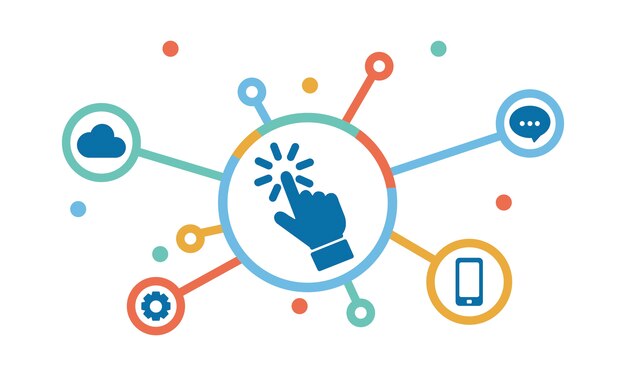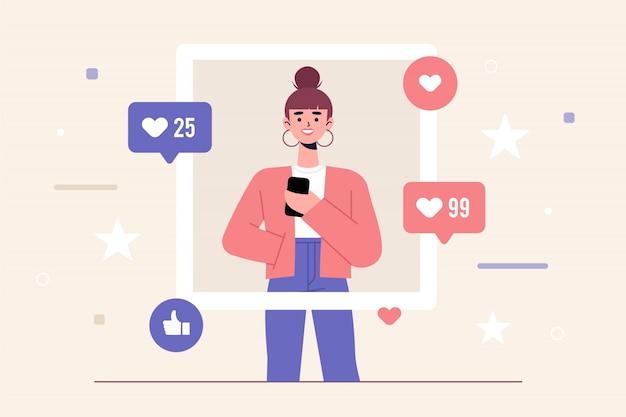5 Useful Marketing Trends For B2B Business

Effectual marketing is difficult to get done.
There are so many factors that affect their success that it’s almost impossible to predict how they’ll go.
But the biggest deciding factor of any successful marketing is the audience. If you don’t target the right audience, however great the promotions or advertisements are, they’ll likely go unrecognized.
And the most difficult and mercurial of these audiences is Business organizations.
And marketing to them needs different strategies altogether than any consumer marketing. This is called B2B marketing.
5 useful marketing trends for B2B marketing:
1. Novel strategies
The marketing landscape is evolving and shape-shifting rapidly. It’s getting more unpredictable, more cluttered with intense competition.
The B2B marketing landscape is full of tactics and tools, but they often lack strategy. So B2B needs to focus more on winning aspirations than simple goals.
Take your SWOT (Strengths, Weaknesses, Opportunities, Threats) analysis seriously. Any trailblazing B2B strategy would put it up front and in the center of their plans.
You’ll need competitive analysis, too, to go with SWOT. You must evaluate your performance against the rest of the competition, or you’ll be left behind.
Make your strategies data-driven. Data contains what happened in the past, but it also allows you to predict what may happen in the future.
Also, your marketing and sales should be integrated and work hand-in-hand. That will bring about more productivity and b2b lead generation that every strategy aims for.
2. Using AI
AI (Artificial Intelligence) and machine learning are taking over every technology we’ve been using.
They have been knocking on the door for quite some time, and it’s time we let them in.
AI-powered virtual assistants, enabled by voice search, are already here. They’re flourishing as the tech giants like Apple, Google, and Samsung are plying their trade to gain superiority in this sector.
AI can present intriguing prospects for B2B marketing. It can assist in personalizing every campaign, fragmenting the client base, and automating most laborious, monotonous tasks. Also, AI can make decisions faster and more pragmatically than any human being.
3. The digital push
The pandemic has only hastened the growth in these last couple of years. However, the B2B firms can take a piece of this digital pie too. They can initiate a digital acceleration by embracing a ‘digital-first and digital-centric strategy.
One of the best ways to market your B2B brand is through online platforms. You can run targeted ads on search engines, social media, and other platforms. All you need is great advertisement design that can help you not only attract the attention of your potential customers, but can also communicate what your brand and its offerings are all about.
Additionally, B2B firms can use incentive marketing alongside email marketing by offering rewards or discounts to customers who complete certain actions, such as subscribing to a newsletter or making a purchase.
Another trend that will change the scene is the rollout of Google’s Core Web Vitals. It can help track the loading speeds, interactivity, and visual stability.
Also, B2B marketers can invest in videos that consume the most traffic on the internet. For example, vlogs, introductions, demonstrations, employee spotlights, explainers and tutorials, and client success stories can be transformed into compact videos.
4. AR experience
AR or Augmented Reality had already delivered a punch when Pokemon Go was released in 2016 and instantly took the world by storm. Another apparent example can be the inexplicable growth of ‘Filters’ on Snapchat and Instagram.
AR creates virtual components in our real world and allows the users to engage, play or interact with them.
As smartphones of today can deliver AR par excellence, and nearly everybody has a smartphone, the marketing potential is beyond any imagination.
B2B marketing can employ AR in things like sales presentations, demos for a product, and introductions for any brand.
As people’s attention spans are dwindling, alluring them to pay attention is already a success, especially in an oversaturated marketplace like B2B.
5. Choosing Micro-Influencers
Influencer marketing has increased dramatically in these recent years and will only go upwards in this social-media-centric world.
However, teaming up with major influencers is costly and may not always provide the expected results.
Large influencers may lose followers if they keep trying to push sponsored content down their audience’s throats. Then, people start disliking them because they feel they’re being manipulated.
This is why B2B should focus on micro-influencers. They have considerably smaller but almost always a devoted following.
You can get a much higher ROI if your business can connect well with a certain micro-influencer and its audience.
An influencer’s ability shouldn’t be calculated by the number of followers but rather by their relationship or connection with the followers.
CONCLUSION
As tricky as it is, B2B marketing can be done constructively.
Whatever products you sell, whatever services you provide, you need to keep up with the B2B marketing trends.
Only then can you provide a better experience to your clients. So when it comes to B2B, you need to constantly explore and innovate new ways.
Additionals:































